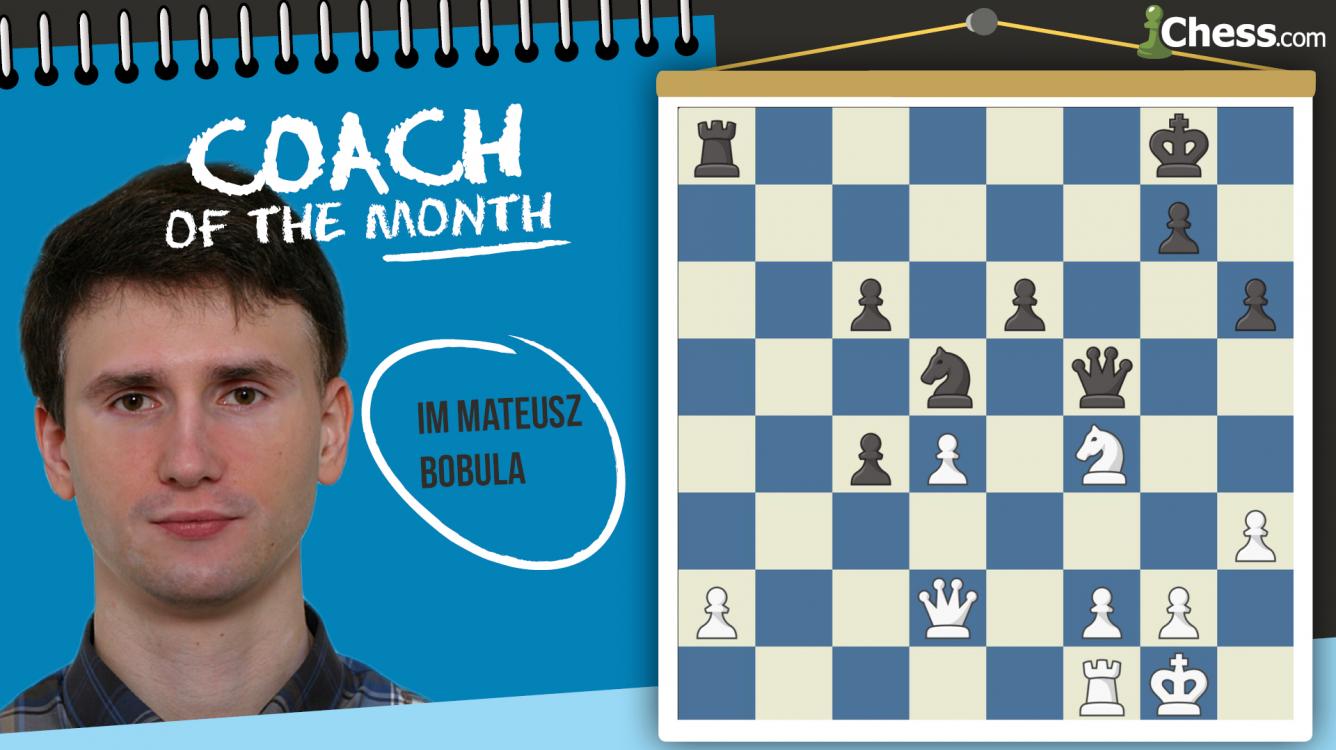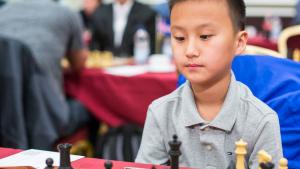
Coach Of The Month: IM Mateusz Bobula
IM Mateusz Bobula is one of the new coaches on Chess.com.
His streams at www.Twitch.tv/matbobula emphasize opening theory and break down critical opening and middlegame structures during and after his games, many that he has played against viewers. After his streams, Bobula reviews his critical games with key opening pointers in his blog. His latest blog breaks down the Tarrasch.
Readers seeking private instruction can contact IM Bobula via his Chess.com profile (@MatBobula) and can find numerous skilled coaches at Chess.com/coaches.
Interview with IM Mateusz Bobula:
Chess.com: At what age were you introduced to chess, and who introduced you?
Bobula: I started playing chess in kindergarten, when I was around six years old. My father was my first coach.
What is your first vivid memory from chess?
I remember the first game at my first tournament. I played with another kid and got checkmated in about one minute. I do not remember the whole game precisely, but I still wonder, how is it possible to get checkmated with the move ...Nc2 in five or six moves when you play White?
Which coaches were helpful in your chess career, and what was the most useful knowledge they imparted to you?
My first and most important coach was my father. When we started, he did not know much about chess, but he was training with me. He taught me all the basics and guided me all the time. We worked together at least two hours every day for 10 years.
Of course, I worked with a lot of coaches during my active career. As a member of a Polish national youth team, I was in a program called Chess Academy of Polish Chess Federation, which gave me an opportunity to be trained by the best Polish trainers. Two of them had an especially significant impact on me: Oleg Kalinin and Marek Matlak. Both are well-known Polish experts in French Defense, which is my favorite opening.
Which game do you consider your masterpiece?
The game that I am most proud of is my draw against Judit Polgar. She is considered the strongest female chess player of all time. I didn't expect a positive result, so I decided to play my best and wait for an opportunity, but the result came out of the blue.
Despite the missed chance, I was very happy to get a draw. It was a great honor to play against such a legend:
How would you describe your approach to chess coaching?
I believe that you can learn the most from your own mistakes. This is why I am convinced that the fastest way you can progress is by analyzing games you play. This way you learn to avoid repeating the same mistakes in future games.
Sometimes, in order to have great games, you do not need to have brilliant moves and ideas; it is enough to just not make mistakes and to take advantage when your opponent errs.
What do you consider your responsibilities as a coach, and which responsibilities fall on your student?
A coach should be a mentor who shows the right way to a student. He ought to help to find answers for important issues (for example, about the opening repertoire) and give hints based on his own experience. He should also expose the student's mistakes and help overcome them.
But it is not possible to improve without the student's own work. Training with tactics every day, playing games online, reading chess books and analyzing classical games are the student’s responsibilities.
What piece of advice do you give your students that you think more chess players could benefit from?
One of the most common mistakes among players is simple blunders. You can play very well the whole game, but if you blunder, in the end you are likely going to lose. This is why my advice is to ask yourself these questions before you move:
1. Can I capture something for free?
2. Can my opponent capture something for free?
I am aware that this sounds like a very simple recipe, but in practice you need to consistently ask these questions before making each move. It is worth spending a couple seconds to ask these questions in order to reduce the rate of blunders and save you a lot of points.
What is your favorite teaching game that users might not have seen?
I will go with Capablanca–Fonaroff (1918). The third world champion teaches us how to combine strategic and tactical thinking:
What puzzle do you give students that tells the most about how they think?
In my first lesson I always set this position. I know it looks very simple—only kings and a couple pawns. But watching someone solve this position shows how someone understands endgames and positional understanding.
In the endgames, there are two most important principles: king activity and passed pawns. In order to win this position, you must to take into account both things. You need to describe a plan, step-by-step, in the right order.
The correct plan for White:
1. Move the king to the center.
2. Block pawns on the kingside.
3. Push pawns on the queenside and create a passed pawn.
4. Sacrifice passed pawn and move the king back to the kingside as the black king is fighting with White's queenside passed pawn.
5. Capture pawns on the kingside and promote a pawn to queen.
6. Checkmate with a queen.
Do you prefer to teach online or offline? What do you think is different about teaching online?
I definitely prefer to teach online. It is more convenient for both the student and coach. It is faster to set up the board with different problems. Since the lesson is online, you do not need to think about a suitable location for the lesson.
Tools like the interactive analysis chessboard (arrows, highlights) make the process of teaching very efficient. Another advantage is that students can choose from coaches all around the world, not just local teachers.
What do you consider the most valuable training tool that the internet provides?
There are many useful materials on the internet, but my favorite is Tactics Trainer. It gives you access to a huge amount of tactics that a competitive player should work on everyday. You do not need to buy new books, and you do not need to waste your time on setting up every puzzle. The best part is that you can train wherever and whenever you want to, even riding a bus.
I especially recommend Puzzle Rush; it is not only fun but educational. You need to find a solution under time pressure. At the beginning of each Puzzle Rush attempt, there are easy tactics—easy tactics are around 90 percent of all tactics in practical games. You can learn how to recognize them immediately.
Which underappreciated chess book should every chess player read?
One of my favorite chess books, which I encourage every player to read, is Think Like A Grandmaster by Alexander Kotow. The author explains the most important thing in chess: how to create a plan. I admire the book so much that it inspires my streams on Twitch: Think Like an International Master.
Prior coach of the month winners:
